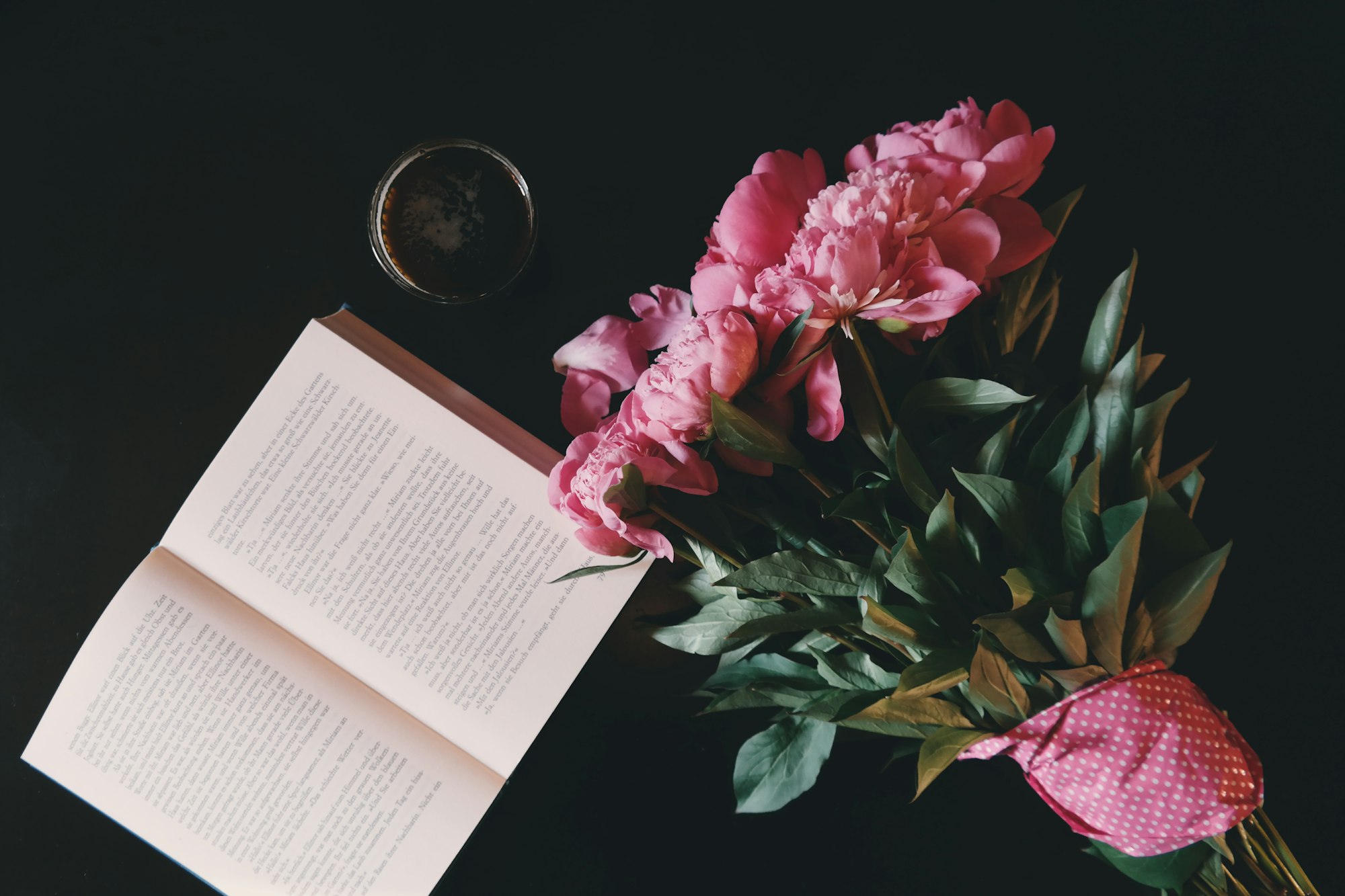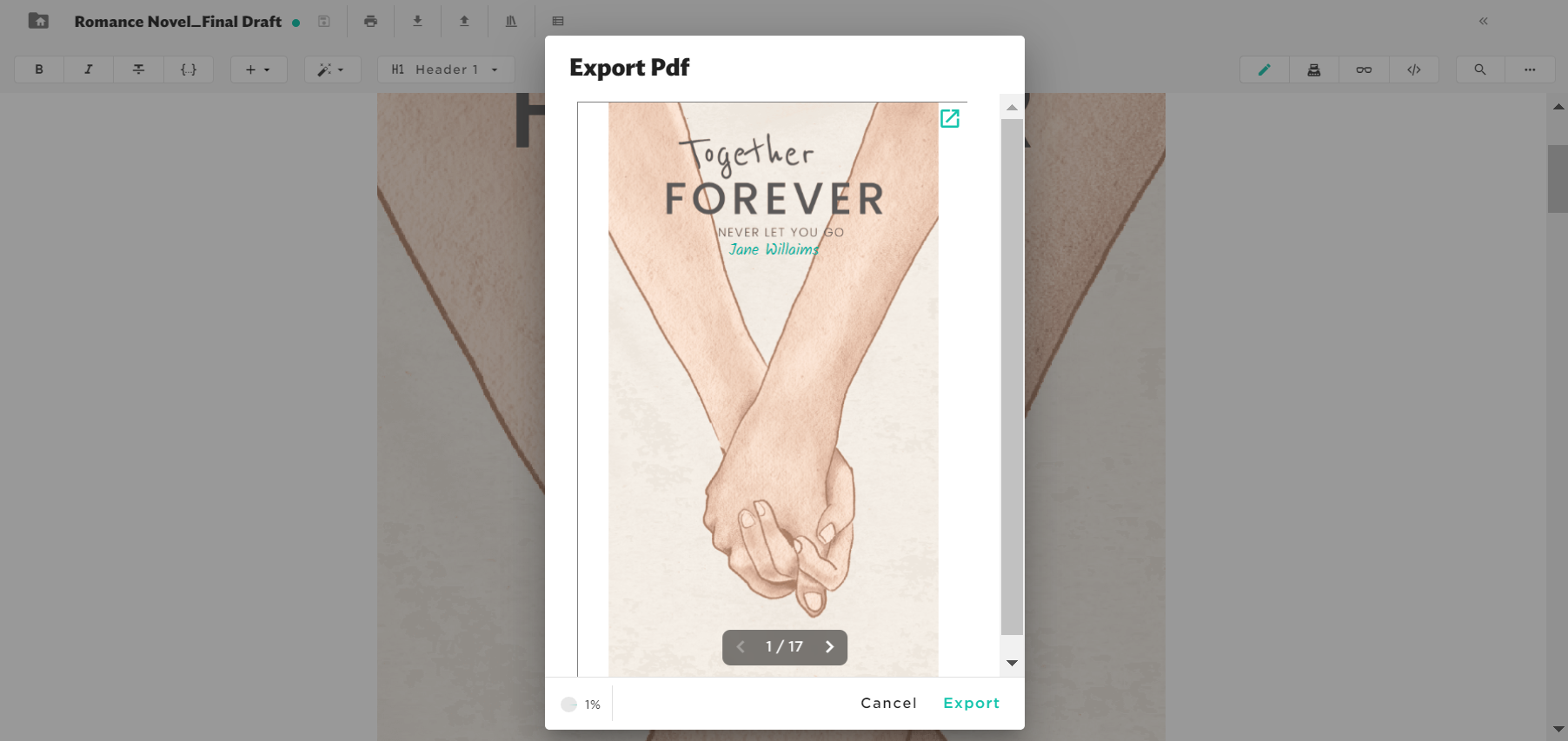How To Write & Publish An Enamouring Romance Novel Into An eBook
Romance novels have a special place in our hearts. This genre encompasses many subgenres that you can explore and experiment with. This Valentines, dive deep into the genre of Romance and churn out a love story that can capture the hearts of your readers. Read on to find out more!

Think Nicholas Sparks's "The Notebook", Audrey Niffenegger's " The Time Traveler's Wife", Jane Austen's "Pride and Prejudice", or Charlotte Brontë's "Jane Eyre".
Romance novels and love stories have always had a special place in our hearts. They display mystery, intimacy, and human connection that we all love to read about and yearn to experience in our lives.
We have all had the experience of reading a love story that pulls at our heartstrings, in both good and bad ways. But no matter what, they've all made a significant impact on us and have even shaped our perspective on love.
What is A Romance Novel?
A romance novel refers to a type of fiction novel that places primary focus on the relationship and romantic love between two people, and usually has an emotionally satisfying or optimistic ending.

The modern romance novel has origins in the romantic fiction of the 18th and 19th centuries. In early romance novels, readers were introduced to a new form of fiction, one that primarily focused on the lives and struggles of female protagonists. Now, modern romance novels have expanded to include protagonists of different genders, races, sexualities, and abilities.
Elements of a Romance Novel
There are many key elements that need to go into a love story to make it a great romance novel. If you're a first-time romance writer, you might want to leverage on all of these elements to tell an effective, soul-stirring story.
Two basic elements comprise every romance novel; a central love story and an emotionally satisfying or optimistic ending.
The main plot centers around individuals falling in love and struggling to make the relationship work. A writer can include as many subplots as they want as long as the love story is the main focus of the novel. In a romance, the lovers who risk and struggle for each other and their relationship are rewarded with emotional justice or unconditional love.

7 Tips to Write An Enamouring Romance Novel
Although love itself is difficult to explain or comprehend, how you can go about writing a romance novel can be a little less complicated.
1. Choose a sub-genre or niche for your story.
The romance genre of novels is not monolithic, but romance fiction's many sub-genres and tropes.
The sub-genre categorization depends on setting and plot elements. Some more popular sub-genres of romance include:
- Historical
- Contemporary
- Young Adult
- Fantasy
- Paranormal
- Supernatural
- Religious or Spiritual
If you're delving into Romance for the first time, feeling concerned about whether your writing will fit within the realms of the genre, fret not. Because more than fitting into the romance genre as an entirety, you have to pick the right subgenre or niche. Choosing a subgenre will allow you to set your love story within a context you're interested in.
The best way to figure out where exactly your interest and skill lies is to read tons of romance novels and stories yourself. You may have already read quite a bit within a certain subgenre that you're drawn to and confident that that's where you fit in. Despite the wide range of subgenres and niches within romance, there are certain guidelines, tips, and tricks that are applicable and universal to all or multiple of these niches.
Make sure you spend some time exploring romance's many other facets as well. Undoubtedly, the subgenre that you find yourself gravitating towards and you enjoy reading the most would highly likely be the one you write as well. Reading as many romance books in your subgenre as possible will help you get a sense of writing conventions and spark story ideas and inspiration for your own.
2. Set the scene well
Setting the scene and mood is vital in romance writing, as creating the appropriate atmosphere for your romance that will inform your characters’ backgrounds is key.

A love story set in a modern-day context will feel and read different from a story set in the Victorian era. Be as specific, detailed and as accurate as possible when describing your romance fiction’s setting. This applies to the sensory experience of your place and location as well. A memorable setting will capture readers’ imaginations and make space for a vivid imagination and creating a backdrop for your romance novel.
Romance is also all about escapism for readers. No matter where your story is set, it needs to feel immersive and real. Consider drawing a map of your setting to keep the geography consistent while taking details from real life to enhance authenticity. In this regard, if the setting isn’t immersive enough, readers won’t be able to lose themselves in the story and the romance.
3. Create compelling and strong characters
The nature of the genre makes romance an extremely character-driven genre. This makes the needs for your main couple to be compelling and have your readers head over heels very important.
Strong main characters will retain your readers' engagement throughout your story. And the dynamics of your story will also be determined by the chemistry of your protagonists. Write compelling backstories for your characters that will be able to inform their points of view about romantic relationships in a vivid manner.
Make sure to not skimp on POV details and dive deep into character development when it comes to the protagonist’s love interest either: Remember, a romance novel is only as intriguing as the dynamic between the lovers. The best romance writers have been known to develop rich, complex characters to fuel their love story.

In order to build your protagonists' characters well, and to place them in a convincing storyline, the Snowflake Outline Method Templates by JotterPad can provide a brainstorming skeleton for you. In this template, you have guidelines that help you state the motivations of your characters, their goals (professional, personal, or love), your characters' internal and external conflict, and many other story building blocks that can create well-developed characters, a robust outline and in time, an engaging love story.
4. Develop a conflict
Romance novels need a central conflict. The nature and the size of the conflict in your story will create a similar kind of tension that will push the plot. Usually, the higher the tension, the more satisfying it feels when your characters finally unite.
Decide on an inciting incident first. This could be the point in time when they meet for the very first time. This event and plot point sets the tone for the romantic trope. It also provides the characters a reason to keep running into each other.
Afterwhich, decide on a "crisis" point. This is often referred to as the "black moment" or "all is lost moment". Readers should feel like there is something keeping your protagonists apart, and that it is insurmountable. Introduce a change after this, during which something about the protagonists or their circumstances change, bringing about a way to overcome the problem. Commonly, we see the hero "rescue" the heroine. But times have changed, and heroines are capable of rescuing themselves.
5. Make sure the romance resonates!
Once you’ve ironed out your protagonists, decided on inciting and conflict plot points, and established your setting, go back to the main themes and overall message behind your romance.
The emotion of romance should remain at the forefront of your story. All the elements, characters, and vehicles in your story should work towards creating a story and an emotion that resonates.

Romance is a real, human experience, and it is imbued in many realistic situations and issues that affect people. Romance also often intertwines with other human experiences like illness, death, birth and other concepts. Good romance writers manage to pull at the heartstrings of readers no matter what romance intertwines with. If you successfully leave the reader with a sense of warm and fuzzy contentment, you've done something right.
6. Don't forget to develop secondary characters as well
Secondary characters in romance story are key in moving the plot and adding layers to the story. They fill out the world of your romance novel. A very common secondary character that has been known to support the main track and plot is the best friend. They allow readers to uncover other sides to the protagonists as well. They also ease your burdens by providing a character for your protagonists to converse with so that you don't have to write reams of internal monologue.
Other secondary characters, like family or the wider circle of friends, help bring the main characters' social circle alive and show them as a fully rounded person. Apart from their romantic interests, they also have other relationships and commitments to maneuver. Family, whether it is biological family or chosen family plays a large role in making up the background world of the main characters in romance.
7. Make sure your ending is satisfactory
One of the romance genre's implicit promises is the happy ending. No matter how much turbulence your main couple experiences over the course of your novel, they should end up together. It does not have to be a promised “happily ever after”, but enough to reassure the reader that these two characters are stable for the foreseeable future.
There are special cases that don’t adhere to this rule, such as the endings of Me Before You and Dear John. The main characters in these novels don’t end up together, but they have grown into their own individuals because of the experiences they had together and how those shaped them. Still, this is a difficult resolution to pull off. If you're trying your hand at a romance novel for the first time, explore the traditional happy ending to see where your comfort levels lie.

The ending of your novel, no matter what, should also tie up any loose threads that you weave throughout the narrative. Again, romance readers want to be fully immersed in the story, and that immersion suffers if they’re left wondering about questions you posed but never answered.
How To Write an Enamouring Romance Novel
1. Select a template for your romance novel
Using a template to start writing your Romance novel could not be easier. All you have to do is open JotterPad's web editor, select "New Document", select "New from Template", search for the Romance Novel template or any other desired template through phrases or filter templates by category, and select a template to start writing.
You could consider the following templates to start churning out your story:
With JotterPad's writing templates, you have the ability to customize and personalize your work on Markdown documents however you please. Details such as the font size, font-type, line-spacing, and even paper or page dimensions can be customized in your work.
For example, in the YAML editor function in templates such as the Romance Novel template, you can use the makeTitle parameter to add a title page, and the tableOfContents parameter to add a content page to your finalized work through your Markdown document.
2. Start writing
1. Text styling
With the templates, you have the ability to indicate chapters, sections and subsections of your book in your Markdown documents easily with the #, ## & ### syntaxes. Inputting a line break in your Markdown document will also translate into a new page or slide, depending on the template you have chosen.
2. Generate ideas with Wizard A.I.
You can also use the Wizard A.I. plugin on JotterPad as a writing tool and companion. As a writing guide and prompt-generator, this plugin can be utilized to kick-start your novel writing process, no matter what your subject-matter is. You can save time and energy with the aid that it can provide to boost your content.
Wizard A.I. can kick-start your writing by creating an outline for you to subsequently work with and improve upon. Or it can churn out an introductory paragraph for you with regards to the story or topic you have at hand. Reading an AI-generated introduction can give you a better idea of the direction of your writing and function as a bedrock for you to continue writing from. If you find yourself hitting a writer's block early in your writing process, Wizard A.I. can also generate starting key points for you to kick-start your writing. By feeding Wizard A.I. with a topic, you can use the points that are generated to jump-start your actual writing.
3. Add images
To spruce up your romance novel in a way that you like, you can upload images from your own gallery into your novel. When added to your documents, your images are uploaded to the cloud and thereafter added to your Markdown or text documents. This makes your images accessible from whichever platform you open your documents from, considered you are connected to the Internet.
You images are secured and can be viewed should you choose to print your documents, or export or publish them. When your images are added and saved in your Markdown files, a random public URL will be generated for your image, making accessing it from anywhere possible. To add on, images of multiple file types can be added to documents. These include jpeg, jpg, png, svg and gif.
Having the option of uploading your images from your gallery, together with being able to utilize Unsplash and URLs gives you more freedom and space to spruce up your work to your liking.
3. Design a book cover
If you want to spend a little more time and thought into creating a book cover from scratch for your romance novel, you can do so outside of JotterPad and upload your very own book cover to your Markdown document. The random public URL that is generated for your book cover when you add it to your documents and thereafter uploaded to the cloud can be input into the cover: parameter in your document's YAML Font Matter.

Platforms like Reedsy, Canva, or Book Cover Maker have the appropriate tools for you to design your own book covers.
4. Export Your Romance Novel eBook to PDF or ePub
Together with the creative aspects of writing your romance novel, spend some time thinking about the technical aspects of publishing your story as well.
You can also choose to view or print your work by clicking "print" and "print using template (.pdf)". In the case that you have a satisfactory draft of your novel in hand, and you have been brainstorming about getting your book published electronically, you can publish your book with the help of the ePub plugin on JotterPad easily.
This plugin converts your Markdown documents into formatted eBooks and generates and packages your final document with standard electronic publishing formatting.
To use this plugin:
- Create a new Markdown text file.
- Open the YAML Front Matter
- Customize your book attributes by defining book attributes such as the
title,author, andpublisherin the YAML front matter. E.g.title: Sailing Voyage By Water. - Open "Export" menu and select the Epub export option.
5. Publish your work to eBook platforms
Multiple eReaders now support EPUB files. You can export and view your work on platforms such as Apple Books, Kobo, Amazon Kindle, Barnes, and Noble Nook after completing your writing. By being able to create you very own ePub books from start to end on JotterPad and being able to share them directly seamlessly on multiple platforms, your work can reach a larger audience much sooner.

The genre of romance writing is large and has multitudes. There’s no one right way to write romance, as it encompasses so many sub-genres that you can explore and experiment with. With these broad strokes of a romance novel, you have a framework to build your very own story around to write your very own enamouring romance novel, and hopefully one step closer to publishing one of your own!
All the best, and Happy Valentine's Day!



